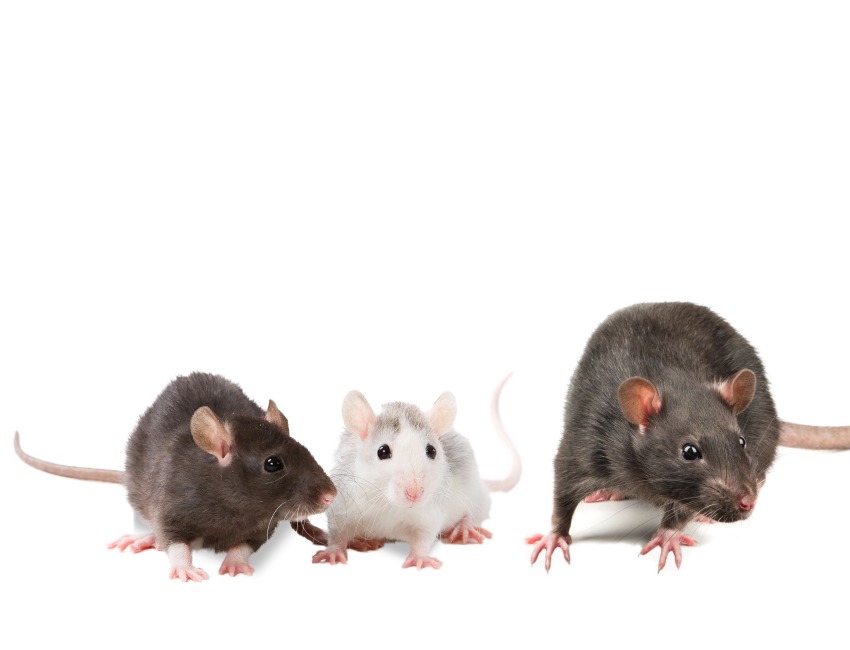
Mice and rats may both be small, furry rodents, but they have distinct differences that set them apart. While both species are considered pests in North Carolina and can carry diseases, they have different physical characteristics, behaviors, and habitat preferences.
If you’re dealing with a rodent infestation in your home, it’s important to identify Raleigh mice vs. rat infestations to take the appropriate steps to get rid of them.
In this blog, we’ll delve into the key differences between mice and rats to help you better understand these pesky creatures and how to deal with them.
Why Do I Have Rodents? Mice vs. Rat Infestations
Rodents such as mice and rats are common household pests that can cause extensive damage and spread disease. But have you ever wondered how and why they find their way into your home? Well, the answer lies in their basic needs for food, water, and shelter.
They head to areas rife with food, particularly grains, seeds, and other dry goods. They can easily detect food odors from long distances and will follow their noses to find a reliable source of nutrition.
Once they’ve discovered a food source, they’ll do whatever it takes to maintain access, even if it means chewing through walls or sneaking in through small openings.
These pests also need access to water to survive, so they are drawn to areas with a ready supply of moisture. You may see them in spaces with leaky pipes, dripping faucets, or wherever condensation tends to accumulate. Any moist area of your home can be an open invitation for rodents to move in and start a family.
Plus, rodents seek shelter to protect themselves from predators and the elements, preferring cozy, dark spaces where they can build their nests and breed. You’re most likely to find rodents in attics, basements, crawl spaces, and other dark corners of your home.
But it’s about more than finding a comfortable place to live. Rodents can also enter your home searching for a warm place to stay during the colder months.
As the weather turns more frigid, rodents start looking for warm winter shelter. They’ll search for any cracks or openings in your home’s exterior that they can squeeze through to gain access to the heat and protection of your home.
Rodent Physical Differences
When comparing mice vs. rat infestations, you’ll often have to deal with different-sized pests. Norway rats, roof rats, and house mice are three common species that can invade your home, each with its own distinct physical characteristics.
Norway rats, also known as brown rats, are the largest of the three. They have coarse brown or gray fur, small ears, and a blunt snout. Norway rats are good swimmers and are known for their burrowing ability, making them more likely to be found in basements, sewers, and other underground areas.
Roof rats, also known as black rats, are slightly smaller than Norway rats. They have sleek black or dark brown fur, large ears, and a pointed snout. Roof rats are agile climbers and prefer to nest in high areas, such as attics or trees, so you may hear them running around overhead.
House mice are the smallest in size and weight. These pests have soft brown or gray fur, large ears, and a pointed snout, but their slight stature typically sets them apart from other large rodents.
They’re agile climbers and can squeeze through openings as small as a dime, making it easier for them to invade your home. House mice prefer to nest in secluded areas, such as wall voids or storage boxes, but don’t be surprised if you see them sneaking elsewhere in your home.
Another physical difference between these rodents is their tail length. House mice have longer tails compared to their body size, and their tails have a covering of fine hair. Norway rats have shorter tails about the same length as their body, while roof rats have longer tails than their body.
Mice vs. Rat Behavior
Mice and rats are pesky rodents that can invade your home, but their behavior differs in a few key ways. While both species are nocturnal and prefer to avoid human contact, they have distinct personalities that set them apart.
Mice are generally more curious than rats. They’re smaller in size and more agile, meaning they’re likely to climb and explore new areas. Mice may feel comfortable exploring unfamiliar objects and smells, investigating anything that appears attractive.
These tiny terrors will likely explore your kitchen counters, chew on random objects, or nibble on any food left out. While still cautious critters, mice may be bold enough to sneak around in front of you.
On the other hand, Rats are cautious and careful in their movements. Because of their larger size and lack of dexterity, they prefer to stay on the ground and avoid open areas near humans or other predators.
Unlike the smaller rodents, rats will stick to established paths and follow familiar routes to avoid detection. Because rats also like to stick close to their homes, they may stay hidden in dark corners or along the edges of rooms to not stray far away.
You may also notice differences in their nests when comparing mice vs. rat infestations. Mice build nests with soft, warm materials, like shredded paper, cloth, or insulation. You may even see wool, cotton, or hair intertwined in their tiny nests.
Rats utilize similar objects but may incorporate twigs, leaves, other plant materials, or discarded garbage. Because of their larger size, rat nests are larger and more complex, with different chambers to accommodate their young and food stores.
Regarding feeding behavior, mice and rats are opportunistic and eat just about anything they can find. However, rats are more selective and stick to a few specific food sources, hoarding their finds in secure areas for later consumption.
Rodent Prevention
Mice vs. rat infestations are tough to beat, but you can easily eliminate these pests with a few tips and help from the pest control experts at Innovative Pest Solutions.
While physically and behaviorally different, you can utilize many of the same techniques to eliminate them quickly.
Prevention is critical to keeping pests at bay. Seal any cracks or gaps in your home’s foundation, walls, and windows to prevent rats and mice from entering in the first place. Keep your living spaces clean and tidy, and store food in airtight containers.
Snap traps and glue traps are effective for catching rats and mice. Similarly, poisons are an excellent way to keep rodents at bay. However, we caution you when using at-home pest control options.
While store-bought products are helpful in a pinch, they can be dangerous when misused. The perks of trusting a pest agency with your rodent problems are top-notch products and the appropriate placement knowledge.
When using these products, always follow the instructions and keep harmful objects away from children and pets.
To forget the hassle and get your home back to normal quickly, contact us for swift and accurate pest elimination services in Raleigh, North Carolina! Learn more about how we treat rodents here, and give us a call!





